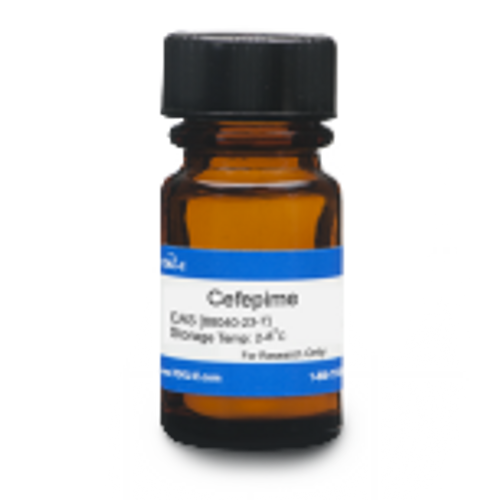Cefepime is a semi-synthetic, broad-spectrum, fourth-generation cephalosporin antibiotic that was patented in 1982 by Bristol-Myers Squibb. Cefepime is bactericidal against a wide range of Gram-positive and Gram-negative bacteria, disrupting bacterial cell wall synthesis. Cefepime is a zwitterion with a net neutral charge which crosses the outer membrane of Gram-negative bacilli more rapidly than other cephalosporins. It appears to be intrinsically more resistant to hydrolysis by β-lactamases and is commonly used in antimicrobial susceptibility testing.
Cefepime is sparingly soluble in water.
We also offer:
- Cefepime Hydrochloride (C009)




